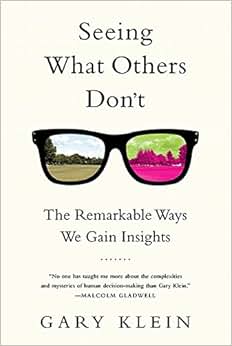
Best Economic Calendar Websites for Traders
Trade smarter. Time the market. See the future before it happens.
There’s a certain thrill in watching a chart move, knowing exactly why it’s moving, and anticipating when the next wave will hit. In the world of trading—whether you’re knee-deep in forex, scanning for stock breakouts, tracking crypto volatility, or gauging commodities—information isn’t just power, it’s profit. And one of the most underrated weapons in a trader’s arsenal is the economic calendar. Think of it as your market compass, pointing you toward events that shift sentiment before price action catches up.
Back when I started, I’d enter positions blind, reacting to moves without knowing a major jobs report or central bank meeting was about to drop. That’s the kind of rookie mistake an economic calendar solves instantly. The right platform won’t just list events—they’ll tell you which ones matter for your asset class, and how volatile the reaction might be.
What Makes a Great Economic Calendar
Real-Time Accuracy & Coverage
Markets don’t wait for late updates. A solid economic calendar updates instantly after data releases—GDP numbers, CPI figures, unemployment rates—no lag, no second guessing. The best sites layer in multiple asset filters, so a forex trader can drill into currency-specific events while an equities trader gets earnings guidance.
Example: Trading EUR/USD before an ECB interest rate decision without knowing the exact time is like showing up to a race halfway through—it’s better to know the starting gun before it fires.
Event Impact Ratings
Not all data points are equal. Great economic calendars use clear impact ratings—usually marked low, medium, or high—so traders understand potential volatility before committing capital. This is crucial for prop trading desks, where risk control and timing are everything.
Top Economic Calendar Platforms Worth Checking
- Forex Factory – Intuitive interface, reliable impact ratings, great for day traders.
- Investing.com – Wide asset coverage: forex, stocks, crypto, indices, commodities. Mobile-friendly.
- Trading Economics – Macro data junkie’s paradise, with detailed country-by-country breakdowns.
- DailyFX – Combines calendar events with market analysis for FX-focused traders.
- MarketWatch – Mainstream coverage for equities and corporate events.
Each of these has their quirks—Forex Factory’s minimalist UI keeps you focused on essentials, while DailyFX bridges technical charts with the calendar feed for tight integration into your trading workflow.
Why Prop Traders Swear by Economic Calendars
Prop firms live and die by risk-adjusted returns. Timing trades around definable catalysts—interest rate decisions, corporate earnings, geopolitical headlines—turns guesswork into strategy. Economic calendars align teams, ensure synchronized entries/exits, and help avoid the catastrophe of being overleveraged during surprise volatility.
I’ve seen traders make a week’s profit in an hour because they pre-positioned for a high-impact jobs report that confirmed market expectations. Conversely, ignorance of these events can turn a winning streak into margin calls.
Multiple Asset Classes, One Tool
Whether you’re watching the S&P 500, Bitcoin, crude oil futures, or copper contracts, macroeconomic events ripple through everything. A strong U.S. dollar often pressures commodities. Interest rate hikes can slam tech stocks but boost bank performance. Crypto? Bitcoin often reacts to inflation data and central bank tone—even if some traders pretend it’s “totally independent.”
With one calendar, you can track correlations across markets in real time, spotting opportunities for diversified plays.
Trading in the Age of Decentralization
DeFi has added a whole new layer of complexity. Economic calendars for traditional finance don’t yet fully cover decentralized governance votes, smart contract upgrades, or crypto protocol changes—but this coverage is expanding. The challenge? DeFi operates 24/7, outside of fixed “release” schedules. Traders need hybrid calendars that merge TradFi events with blockchain-specific milestones.
Looking forward, AI-driven calendars will scrape and synthesize unstructured data—from central bank speeches to Discord governance chats—turning scattered info into tradable insights. Imagine a calendar that not only lists the Fed meeting at 2:00 PM ET, but also predicts the sentiment shift based on historical reaction patterns and live speech analysis.
Strategy Tips for Using an Economic Calendar
- Plan positions around volatility moments: Trade the reaction or fade the spike depending on your playbook.
- Match leverage to event risk: High-impact events can be windfalls or wipeouts; size accordingly.
- Monitor overlapping events: Sometimes two unrelated reports collide, amplifying moves across markets.
- Track revisions: A data point can move markets twice—the first release and later corrections.
The Road Ahead for Prop Trading
Between the rise of AI, algorithmic executions, and integrated calendar signals, prop trading is leveling up. Firms will increasingly build proprietary economic event feeds enriched with sentiment analytics, backtesting potential moves before they happen. The traders who adapt—who combine human judgment with machine-driven forecasting—will be the ones leading the charge.
“Know the time, own the trade.” That’s how an economic calendar flips uncertainty into strategy. Whether you’re solo trading from your laptop in a café or managing risk at a prop desk in Midtown, this is one tool you don’t just check—you live by it.


